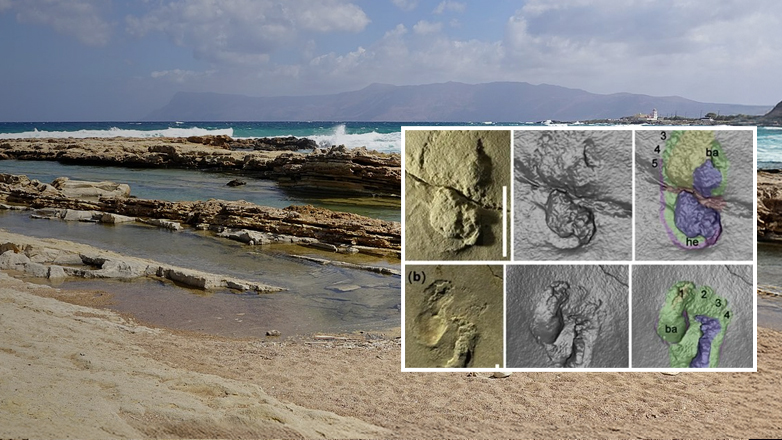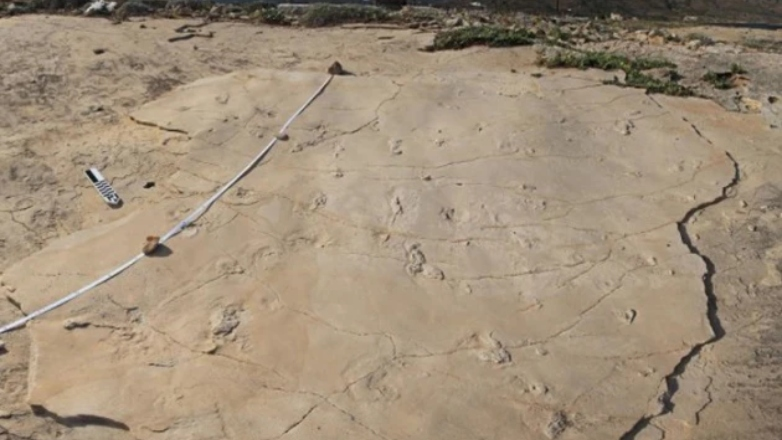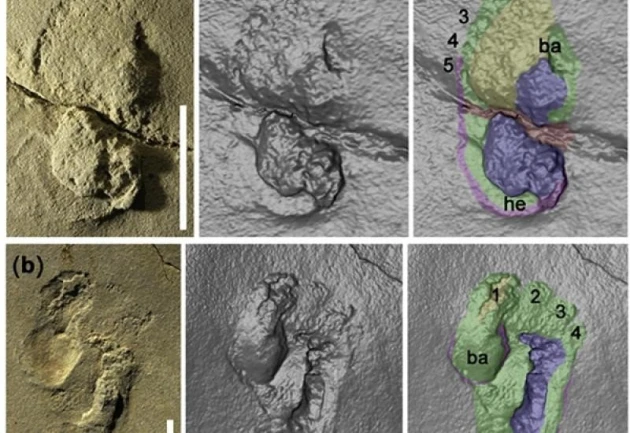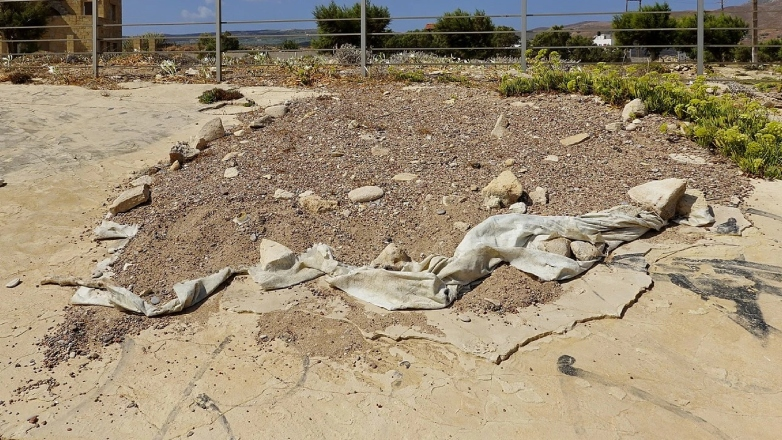A groundbreaking discovery in Crete is sending shockwaves through the global scientific community—and may redefine humanity’s evolutionary timeline.
Fossilized footprints, believed to be over 6 million years old, were uncovered in the Trachilos region of Kissamos, Crete. These ancient tracks are now thought to be the oldest known evidence of upright walking by a human ancestor anywhere in the world.
A Step Back in Time — On Greek Soil
The discovery adds weight to a revolutionary theory: that the earliest ancestors of humans may have walked upright in Europe—not Africa, as traditionally believed. If verified, this would place the roots of humankind firmly in Greek territory, reshaping our understanding of human evolution.
A Rare Glimpse into Prehistoric Gait
The footprints were initially discovered by chance in the summer of 2002, embedded in sedimentary rock near the sea, just 700 meters west of the port of Kissamos. Polish paleontologist Gerard Gierliński spotted unusual hollow shapes during his vacation, capturing photographs and recording the coordinates of the site.
Years later, a deeper investigation began. During a return visit in 2010, Gierliński and fellow researchers Grzegorz Niedźwiedzki and Andrzej Boczarowski hypothesized that the prints could have been left by an upright-walking primate—perhaps an early hominin, a direct ancestor of modern humans.
Anatomy of an Ancient Footprint
The footprints vary in length from 105 to 154 millimeters and show clear characteristics of bipedalism. The impressions suggest the creature had arched feet with five toes, including a bulbous big toe and four slender digits—indicating plantigrade locomotion, similar to that of humans today. Notably, there were no claw marks, ruling out non-primate origins.
Three of the prints are especially well-preserved, offering rare morphological details that have allowed scientists to analyze the anatomy of our ancient relatives with remarkable precision.
Scientific Scrutiny and Global Significance
A team of international researchers—led by Per Erik Ahlberg from Uppsala University in Sweden—formed in 2010 to investigate the site. Using laser scanning technology, they created high-resolution 3D images of over 50 distinct footprints found within a 4-square-meter area.
In October 2021, updated dating techniques confirmed the footprints are approximately 6.05 million years old, aligning them with the Miocene epoch, a time of critical transition in primate evolution.
Modern Research Reignites Interest
From May 12 to May 21, 2025, researchers from Curtin University in Australia, alongside experts from the Natural History Museum of Crete and Greece’s Ephorate of Speleology and Paleoanthropology, returned to the site. Their goal was to re-document and study the tracks using modern tools and methodologies to better understand their origin and confirm their age with maximum accuracy.
According to the team, the findings have the potential to reshape global scientific consensus on the early development of bipedalism and human ancestry.
Local Support and Preservation Efforts
The discovery has sparked significant interest among local authorities. Mayor of Kissamos, Giorgos Mylonakis, and Deputy Mayor for Culture, Giorgos Makrakis, met with the scientific team to discuss the historical value of the site and the importance of its protection and promotion as a site of global heritage.
Final Thoughts
While we await further peer-reviewed confirmation, this discovery opens thrilling possibilities: that our ancestors may have walked upright on Greek soil millions of years before anyone expected. In the world of paleoanthropology, few things are more exciting than a footprint frozen in time—especially when it might rewrite our species’ origin story.










